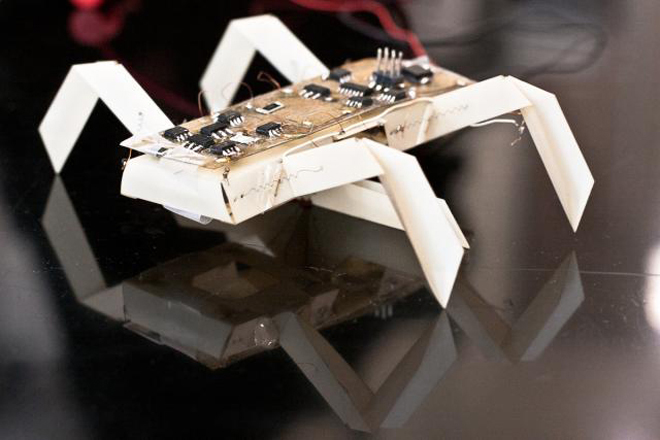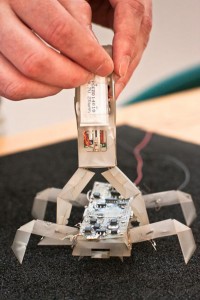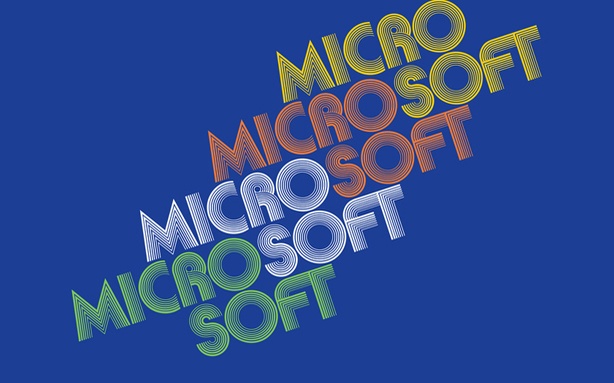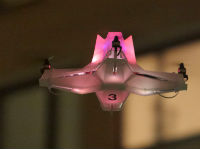Wednesday, May 02. 2012
Via Christian Babski
-----

The Internet is about (if it is not already a terminated task!) to become a pretty classical media. Country's boundaries were raised up on the net, making unavailable some contents depending on the world region you are browsing from (pretty weird, middle-age based concept of what the Internet must be)... We are now heavily targeted by many advertisements all around contents we are trying to access from the Web, pop-up blockers are now totally useless as advertisements took fairly advantage of HTML evolution. It is more and more difficult to ignore these advertisements, and even by closing them, one already produces/gives an information to Big Brother. There is less and less ways to escape, and by reading the following article, it looks like we are not supposed to escape... by the way. Responsive Advertising article
The opportunity to set up an alternative network (satellite based?) may be the only way to get a new [commercially virgin] web... Let's call it The Veb... underlying the need of a step back from where we are nowadays.
Tuesday, May 01. 2012
Via Christian Babski
-----

It looks like that Microsoft is about to propose the access to an operating system design to control your... home. The prototype seems to be accessible freely for non-commercial use.
Here is the abstract and a direct link to the research program's web page:
It is no secret that homes are ever-increasing
hotbeds of new technology such as set-top boxes, game consoles, wireless
routers, home automation devices, tablets, smart phones, and security
cameras. This innovation is breeding heterogeneity and complexity that
frustrates even technically-savvy users’ attempts to improve day-to-day
life by implementing functionality that uses these devices in
combination. For instance, it is impossible for most users to view video
captured by their security camera on their smartphone when they are not
at home. Heterogeneity across devices and across homes also makes it
difficult to develop applications that solve these problems in a way
that work across a range of homes.
To simplify the management of technology and to simplify the
development of applications in the home, we are developing an "operating
system" for the home. HomeOS provides a centralized, holistic control
of devices in the home. It provides to users intuitive controls to
manage their devices. It provided to developers high-level abstractions
to orchestrate the devices in the home. HomeOS is coupled with
a HomeStore through which users can easily add obtain applications that
are compatible with devices in their homes and obtain any additional
devices that are needed to enable desired applications.
HomeOS
Friday, April 27. 2012
Via ifixit.org
-----
The iPad’s light, sleek, simple construction belies its complex
origins. There’s a lot of stuff in the iPad: aluminum and glass, of
course, but also other heavy metals and toxic chemicals. And
manufacturing each 1.44-pound iPad results in over 285 times
its own weight in greenhouse gas emissions. The manufacturing of and
material used in the iPad are two reasons why the iPad must be made in
China—and not just in the ways you’d expect.
Yes, labor is dirt cheap in China. Minimum wage was just $138/month at Hongkai Electronics in October 2010, compared to $1160/month in the US (based on a $7.25/hour federal minimum wage and a 40-hour work week).
And yes, environmental regulations in China are pretty minimal (though improving). China ranks 116th out of 132 countries on Yale’s 2012 Environmental Performance Index
rankings. Even with all their illegally run coltan mines, the
Democratic Republic of Congo is ranked many points higher than China.
But there’s another important reason why Apple and other
manufacturers have their heels stuck in Chinese mud. iPad manufacturing,
like the manufacturing of other electronics, requires a significant
amount of rare earth elements, the 17 difficult-to-mine elements used in
all kinds of green technology. It’s hard to say exactly what rare
earths are in an iPad, since Apple is really tight-lipped about their
materials—no one can even get them to confirm what manufacturer makes
their impact-resistant glass, though I suspect Asahi.
Cambridge engineering professor Dr. Tim Coombs
guesses that there may be lanthanum in the iPad’s lithium-ion polymer
battery, as well as “a range of rare earths to produce the different
colours” in the display. The magnets along the side of the iPad and in its cover (pictured above) are possibly a neodymium alloy. Electronics glass is often polished with cerium oxide. According to a Congressional Research Service report, worldwide demand for rare earths was 136,100 tons in 2010, 45-percent of which was for magnets, glass, and polishing.
All Our Rare Earths Come from a Pit Mine in China
Why is all this rare earth consumption a problem? China currently controls 95-97%
of the world’s supply of rare earths and has repeatedly cut export
quotas, sending already-high prices skyrocketing. Fearing dependence on
China for rare earths, two companies—Molycorp in California and Lynas Corp in Australia—plan
to begin mining rare earths this year. As green industry continues to
grow, however, it’s unclear if current mining operations will be able to
keep up with increasing demand.
Facing growing concern about the possibility of a rare earth shortage, President Obama recently lodged a complaint with the World Trade Organization against China about their rare earth policy. Some specialists think the complaint may be “too little, too late”—by the time China changes its policy, more manufacturers will have moved plants to China.
Recycling is Not a Rare Earth Solution
It might seem that the mountains of electronic waste would be a
perfect source of rare earths. But recycling isn’t the answer to the
rare earth shortage—at least not yet. Some Japanese recyclers are successfully recovering rare earths from compressors. But neither SIMS Recycling Solutions nor Electronics Recyclers International (ERI),
the two biggest electronics recyclers in the US, are currently
recovering any rare earths in their recycling process, according to SIMS
president Steve Skurnac and ERI CEO John Shegerian.
For now, Skurnac says, “Rare earths come in very minute
concentrations in electronic scrap,” which means that recyclers need
high volume and super efficient processes to recover any reasonable
amount of rare earths from electronics. The technology just isn’t there
to make it economically feasible for most recyclers.
Today, an American electronics company can only be exempt from
China’s rare earth export quotas by manufacturing within China. So
that’s what most companies, including Apple, are doing. The only other
solution is for us to stop consuming so much—an option that people
rarely find appealing. Not as appealing as a retina display, at least.
Wednesday, April 11. 2012
Via hack education
-----

"25 million laptops later," Mashable announced today, "One Laptop Per Child doesn't increase test scores." "Error Message," reads the headline from The Economist: "A disappointing return from an investment in computing."
The tenor of these stories feels like a grand "Gotcha!"
for ed-tech: It's shiny stuff, sure, but it offers no measurable gains
in "student achievement." So while the OLPC project might have been a
good idea, so the story goes, it is not a good investment.
One Laptop Per Child was a good idea, a noble and ambitious
one at that. Originally proposed in 2006, OLPC aimed to build an
inexpensive laptop that would be sold to governments in the developing
world and made available in turn to the children in those countries via
their respective ministries of education. Easier said than done. Over
the course of the past 6 years, the OLPC has fussed with hardware and
software specs, finally building a laptop (and now, a tablet) that costs $200 (twice that of the originally promised price).
In the meantime, much of the developing world has experienced its own
mobile computing revolution. There are now a number of manufacturers
working on low-cost devices for that market. There's the Intel Classmates PC, for example (with similar hardware, but more expensive software than its OLPC coursin); there's the Worldreader project (it delivers villages a library full of e-books via Kindles); and there's the now-infamous Aakash tablet (which was sold in India for $35 but with its reliability and functionality very much in question).
Arguably more significant than the competition OLPC faces from these low-cost tablets and netbooks: 95% of the world's population now owns a cellphone, by some estimates (See Wikipedia's list
of mobile phone penetration, broken down by country). Of course, a
clamshell phone is hardly the same as a laptop. One has SMS; the other, a
command line. Nonetheless, the ubiquity of the cellphone makes it
clear that the value proposition of the OLPC device needs to be more
than just "access" and "connectivity."

The mission of the non-profit organization always stressed something
broader, bigger -- One Laptop per Child meant empowerment, engagement,
and education:
We aim to provide each child with a rugged, low-cost,
low-power, connected laptop. To this end, we have designed hardware,
content and software for collaborative, joyful, and self-empowered
learning. With access to this type of tool, children are engaged in
their own education, and learn, share, and create together. They become
connected to each other, to the world and to a brighter future.
No mention of improving standardized test scores in there, you'll
notice. No talk of "student achievement." "The best preparation for
children," according to the OLPC website isn't test prep. It is "to develop the passion for learning and the ability to learn how to learn."
Standardized test scores in math and in language do not reflect "the
ability to learn how to learn" -- they don't even purport to. But we
fixate on test scores nevertheless. It is worth noting here that the
study that prompted today's headlines about OLPC's "disappointing" test
results -- one conducted by the Inter-American Development Bank
using data collected from some 300 primary schools in rural Peru -- did
find some improvement in students' cognitive skills (as in, "the
ability to learn how to learn").
The study links that boost in cognitive skills to "increased
interaction with technology." Make of that what you will. The study
also found that having access to computers increases your access to
computers. To quote Keanu Reeves here, "Whoa."
The study points out other things too, and it asks "Could stricter
adherence to the OLPC principles have brought about better academic
outcomes?" Many students were not allowed to take their laptops home.
Internet access was "practically non-existent." Just 70% of teachers
had 40-hours of professional development before their students were
given the devices.
That last (missing) piece -- training for teachers -- has long been
something that gets overlooked when it comes to ed-tech initiatives no
matter the location, Peru or the U.S. It is almost as if we believe we
can simply parachute technology in to a classroom and expect everyone to
just pick it up, understand it, use it, hack it, and prosper.
Oh right. OLPC has done just that, a la The Gods Must Be Crazy,
whereby tablets were quite literally dropped into villages from
helicopters. Okay, not everyone receives their devices this way, but
OLPC has always been fairly hands-off in its training implementation
efforts. It's one of the major criticisms that the organization has
faced (along with criticisms about price, hardware, software, and
environmental sustainability).

For his part, Nicholas Negroponte, the head of the OLPC foundation,
frequently points to the work of Sugata Mitra and the "Hole in the Wall
Project" as inspiration
-- the belief that children can learn (and teach each other) on their
own. Children are naturally inquisitive; they are ingenious. Access to
an Internet-enabled computing device is sufficient. They will "figure
it out."
It's part of what Mitra and Negroponte call a "minimally invasive education."
Considering the colonial legacy of education systems in the developing
world, avoiding "invasion" seems profoundly important.
But there remains a strange tension between dropping in a Western
technological "solution" and insisting doing so is "non-invasive." At
it's best, the OLPC represents a desire to support literacy,
connectivity and learning through technology. But it does those things
in a world of ubiquitous cellphones, which on their own have not
transformed education either. In an effort to be "non-invasive" then,
OLPC ends up often being unsupportive -- unsupportive of the tech, the
teachers and the learners.
But is that failure? It doesn't feel like pointing to standardized
test scores in math and language is the right measure at all to gauge
this. It goes against the core of the OLPC mission. But then again,
these measurements are political, not necessarily pedagogical. And
these scores reveal less about the global reach or potential of
technology, and more about the dominant narratives of the U.S. education
system: "what counts" as learning, and "what counts" in terms of
ed-tech's role in delivering or enabling it -- why, standardized test
scores, of course.
Photo credits: OLPC
Friday, April 06. 2012
Via Vanity Fair
---
When the Internet was created, decades ago, one thing was inevitable:
the war today over how (or whether) to control it, and who should have
that power. Battle lines have been drawn between repressive regimes and
Western democracies, corporations and customers, hackers and law
enforcement. Looking toward a year-end negotiation in Dubai, where 193
nations will gather to revise a U.N. treaty concerning the Internet,
Michael Joseph Gross lays out the stakes in a conflict that could split
the virtual world as we know it.
Access to the full article @Vanity Fair
Thursday, April 05. 2012
Via Wired
-----

Insect printable robot. Photo: Jason Dorfman, CSAIL/MIT
Printers can make mugs, chocolate and even blood vessels. Now, MIT scientists want to add robo-assistants to the list of printable goodies.
Today, MIT announced a new project, “An Expedition in Computing
Printable Programmable Machines,” that aims to give everyone a chance to
have his or her own robot.
Need help peering into that unreasonably hard-to-reach cabinet, or
wiping down your grimy 15th-story windows? Walk on over to robo-Kinko’s
to print, and within 24 hours you could have a fully programmed working origami bot doing your dirty work.
“No system exists today that will take, as specification, your
functional needs and will produce a machine capable of fulfilling that
need,” MIT robotics engineer and project manager Daniela Rus said.
Unfortunately, the very earliest you’d be able to get your hands on
an almost-instant robot might be 2017. The MIT scientists, along with
collaborators at Harvard University and the University of Pennsylvania,
received a $10 million grant from the National Science Foundation for
the 5-year project. Right now, it’s at very early stages of development.
So far, the team has prototyped two mechanical helpers: an
insect-like robot and a gripper. The 6-legged tick-like printable robot
could be used to check your basement for gas leaks or to play with your
cat, Rus says. And the gripper claw, which picks up objects, might be
helpful in manufacturing, or for people with disabilities, she says.

Printable gripper. Photo: Jason Dorfman, CSAIL/MIT
The two prototypes cost about $100 and took about 70 minutes to
build. The real cost to customers will depend on the robot’s
specifications, its capabilities and the types of parts that are
required for it to work.
The researchers want to create a one-size-fits-most platform to
circumvent the high costs and special hardware and software often
associated with robots. If their project works out, you could go to a
local robo-printer, pick a design from a catalog and customize a robot
according to your needs. Perhaps down the line you could even order-in
your designer bot through an app.
Their approach to machine building could “democratize access to
robots,” Rus said. She envisions producing devices that could detect
toxic chemicals, aid science education in schools, and help around the
house.
Although bringing robots to the masses sounds like a great idea (a
sniffing bot to find lost socks would come in handy), there are still
several potential roadblocks to consider — for example, how users,
especially novice ones, will interact with the printable robots.
“Maybe this novice user will issue a command that will break the
device, and we would like to develop programming environments that have
the capability of catching these bad commands,” Rus said.
As it stands now, a robot would come pre-programmed to perform a set
of tasks, but if a user wanted more advanced actions, he or she could
build up those actions using the bot’s basic capabilities. That advanced
set of commands could be programmed in a computer and beamed wirelessly
to the robot. And as voice parsing systems get better, Rus thinks you
might be able to simply tell your robot to do your bidding.
Durability is another issue. Would these robots be single-use only?
If so, trekking to robo-Kinko’s every time you needed a bot to look
behind the fridge might get old. These are all considerations the
scientists will be grappling with in the lab. They’ll have at least five
years to tease out some solutions.
In the meantime, it’s worth noting that other other groups are also building robots using printers. German engineers printed a white robotic spider last year. The arachnoid carried a camera and equipment to assess chemical spills.
And at Drexel University, paleontologist Kenneth Lacovara and mechanical engineer James Tangorra are trying to create a robotic dinosaur from dino-bone replicas.
The 3-D-printed bones are scaled versions of laser-scanned fossils. By
the end of 2012, Lacovara and Tangorra hope to have a fully mobile
robotic dinosaur, which they want to use to study how dinosaurs, like
large sauropods, moved.
Lancovara thinks the MIT project is an exciting and promising one:
“If it’s a plug-and-play system, then it’s feasible,” he said. But
“obviously, it [also] depends on the complexity of the robot.” He’s seen
complex machines with working gears printed in one piece, he says.
Right now, the MIT researchers are developing an API that would
facilitate custom robot design and writing algorithms for the assembly
process and operations.
If their project works out, we could all have a bot to call our own in a few years. Who said print was dead?
Wednesday, April 04. 2012
Via Christian Babski
-----
8 bits edition of Google maps. We are all stars now in the game show.



Monday, April 02. 2012
Via The Atlantic Wire
-----

flickr/Jeff Dlouhy
While Apple and Google are busy getting bad press for their privacy
issues, labor practices and general big-evil-company wrongdoings,
Microsoft has done some brand regeneration, making it look like the
hippest tech company on the block these days. As Apple and Google
captured a younger, cooler demographic, the Windows maker, with its
stodgy business oriented PC-compatible operating system and notoriously
annoying browser, became synonymous with lameness. Remember all those
highly effective Mac versus PC commercials?
That PC dork (writer-performer John Hodgman) represented all things
Microsoft: Slow, uptight, badly dressed. But as Apple and Google have
grown up, they've lost their hip sheen. And, Microsoft's taking
advantage. In this era of awesomely bad, it doesn't look so lame anymore
-- especially in comparison to the other guys.
We noticed this new-found hipness when we came across the endearing Browser You Love(d) to Hate
campaign. With some admirable self-awareness, Microsoft used its own
bad reputation to argue that its hated Internet Explorer browser is on
the verge of a comeback. Layering on the hipster-irony, Microsoft
compares itself to once-passe things like PBR and mustaches, suggesting
it's just another brand that's so bad, it's cool again. It also doesn't
hurt that the overall look of the site matches that aesthetic. The Atlantic's own mustachio-ed tech man, Alexis Madrigal gave it his approval, calling this accompanying ad "definitely the funniest commercial Microsoft's ever put out." We agreed, finding the whole thing convincing enough to give our abandoned IE9 a try again. (We still prefer Chrome, by the way.)
But this image comeback isn't limited to IE. Over the last few days we've seen Hotmail ads running on Boing Boing and Jezebel,
two blogs that are hip for different reasons. Boing Boing catering to
the hippest of Internet lovers and Jezebel reaches a more mainstream but
still cool millennial audience. And in general, the overall
Microsoft-related press has been kind of good. Windows 8 surprised and excited
the tech blogger world, something a Windows browser hasn't done since
Windows 95. The company has some other exciting things going on inside
its labs. The other day, It did some Internet good with its Digital Crimes Unit. And, has even designed itself a decent looking logo. Apple's (maybe) new logo, on the other hand, with its rainbow mish-mash, feels dated.
Which brings us to the other aspect of Microsoft's renaissance: good
timing. The once-hipper than Microsoft foes, Google and Apple haven't
looked so good these days. Google, the once beloved search company, has
users uneasy with its Google+ integration, privacy issues and anti-trust concerns. Even Googlers aren't too sure
of Google's mission, these days. Appl still produces insane-popular
gadgets, but no longer wows reviewers like it once did. The new iPad is
still the best tablet out there, but it's not a must-have. Plus, it too
has gotten itself into its own privacy messes. It also had the misfortune of acting as the face of the last few months of Foxconn scandal.
Though the Foxconn protesters that threatened mass suicide back in
January made Microsoft's XBox, thanks to Mike Daisey and Apple's
financial successes, Apple not Microsoft absorbed most of the bad PR.
Part of this has to do with maturity, we suppose. An early bloomer,
Microsoft's already went through its tech company growing pains. It used
to be the evil one, remember? The one accused of monopolistic practices, of buying up the competition, of stifling innovation. But
it's no longer the bully. Google and Apple's misdeeds have
overshadowed the once dominant tech company, and while the other big
players make public messes out of themselves, Microsoft looks to be
cleaning up its image. And, we have to say, it looks good.
Friday, March 30. 2012
Via VB
-----
Facial-recognition platform Face.com
could foil the plans of all those under-age kids looking to score some
booze. Fake IDs might not fool anyone for much longer, because Face.com
claims its new application programming interface (API) can be used to
detect a person’s age by scanning a photo.
With its facial recognition system, Face.com has built two Facebook
apps that can scan photos and tag them for you. The company also offers
an API for developers to use its facial recognition technology in the
apps they build.
Its latest update to the API can scan a photo and supposedly
determine a person’s minimum age, maximum age, and estimated age. It
might not be spot-on accurate, but it could get close enough to
determine your age group.
“Instead of trying to define what makes a person young or old,
we provide our algorithms with a ton of data and the system can reverse
engineer what makes someone young or old,” Face.com chief executive Gil
Hirsch told VentureBeat in an interview. ”We use the general structure
of a face to determine age. As humans, our features are either heighten
or soften depending on the age. Kids have round, soft faces and as we
age, we have elongated faces.”
The algorithms also take wrinkles, facial smoothness, and other
telling age signs into account to place each scanned face into a general
age group. The accuracy, Hirsch told me, is determined by how old a
person looks, not necessarily how old they actually are. The API also
provides a confidence level on how well it could determine the age,
based on image quality and how the person looks in photo, i.e. if they
are turned to one side or are making a strange face.

“Adults are much harder to figure out [their age], especially
celebrities. On average, humans are much better at detecting ages than
machines,” said Hirsch.
The hope is to build the technology into apps that restrict or tailor
content based on age. For example the API could be built into a Netflix
app, scan a child’s face when they open the app, determine they’re too
young to watch The Hangover, and block it. Or — and this is where the
tech could get futuristic and creepy — a display with a camera could
scan someone’s face when they walk into a store and deliver ads based on
their age.
In addition to the age-detection feature, Face.com says it has
updated its API with 30 percent better facial recognition accuracy
and new recognition algorithms. The updates were announced Thursday
and the API is available for any developer to use.
One developer has already used the API to build app called Age Meter,
which is available in the Apple App Store. On its iTunes page, the
entertainment-purposes-only app shows pictures of Justin Bieber and
Barack Obama with approximate ages above their photos.
Other companies in this space include Cognitec, with its FaceVACS software development kit, and Bayometric, which offers FaceIt Face Recognition. Google has also developed facial-recognition technology for Android 4.0 and Apple applied for a facial recognition patent last year.
The technology behind scanning someone’s picture, or even their face,
to figure out their age still needs to be developed for complete
accuracy. But, the day when bouncers and liquor store cashiers can use
an app to scan a fake ID’s holder’s face, determine that they are
younger than the legal drinking age, and refuse to sell them wine
coolers may not be too far off.
Wednesday, March 21. 2012
Via TorrentFreak
-----
A few days ago The Pirate Bay announced that in future parts of its
site could be hosted on GPS controlled drones. To many this may have
sounded like a joke, but in fact these pirate drones already exist.
Project “Electronic Countermeasures” has built a swarm of five fully
operational drones which prove that an “aerial Napster” or an “airborne
Pirate Bay” is not as futuristic as it sounds.
 In an ever-continuing effort to thwart censorship, The Pirate Bay plans to turn flying drones into mobile hosting locations. In an ever-continuing effort to thwart censorship, The Pirate Bay plans to turn flying drones into mobile hosting locations.
“Everyone knows WHAT TPB is. Now they’re going to have to think about
WHERE TPB is,” The Pirate Bay team told TorrentFreak last Sunday,
announcing their drone project.
Liam Young, co-founder of Tomorrow’s Thoughts Today,
was amazed to read the announcement, not so much because of the
technology, because his group has already built a swarm of file-sharing
drones.
“I thought hold on, we are already doing that,” Young told TorrentFreak.
Their starting point for project “Electronic Countermeasures” was to
create something akin to an ‘aerial Napster’ or ‘airborne Pirate Bay’,
but it became much more than that.
“Part nomadic infrastructure and part robotic swarm, we have rebuilt
and programmed the drones to broadcast their own local Wi-Fi network as a
form of aerial Napster. They swarm into formation, broadcasting their
pirate network, and then disperse, escaping detection, only to reform
elsewhere,” says the group describing their creation.
File-Sharing Drone in Action (photo by Claus Langer)

In short the system allows the public to share data with the help of flying drones. Much like the Pirate Box, but one that flies autonomously over the city.
“The public can upload files, photos and share data with one another
as the drones float above the significant public spaces of the city. The
swarm becomes a pirate broadcast network, a mobile infrastructure that
passers-by can interact with,” the creators explain.
One major difference compared to more traditional file-sharing hubs
is that it requires a hefty investment. Each of the drones costs 1500
euros to build. Not a big surprise, considering the hardware that’s
needed to keep these pirate hubs in the air.
“Each one is powered by 2x 2200mAh LiPo batteries. The lift is
provided by 4x Roxxy Brushless Motors that run off a GPS flight control
board. Also on deck are altitude sensors and gyros that keep the flight
stable. They all talk to a master control system through XBee wireless
modules,” Young told TorrentFreak.
“These all sit on a 10mm x 10mm aluminum frame and are wrapped in a
vacuum formed aerodynamic cowling. The network is broadcast using
various different hardware setups ranging from Linux gumstick modules,
wireless routers and USB sticks for file storage.”
For Young and his crew this is just the beginning. With proper
financial support they hope to build more drones and increase the range
they can cover.
“We are planning on scaling up the system by increasing broadcast
range and building more drones for the flock. We are also building in
other systems like autonomous battery change bases. We are looking for
funding and backers to assist us in scaling up the system,” he told us.
Those who see the drones in action (video below) will notice that
they’re not just practical. The creative and artistic background of the
group shines through, with the choreography performed by the drones
perhaps even more stunning than the sharing component.
“When the audience interacts with the drones they glow with vibrant
colors, they break formation, they are called over and their flight
pattern becomes more dramatic and expressive,” the group explains.
Besides the artistic value, the drones can also have other use cases
than being a “pirate hub.” For example, they can serve as peer-to-peer
communications support for protesters and activists in regions where
Internet access is censored.
Either way, whether it’s Hollywood or a dictator, there will always
be groups that have a reason to shoot the machines down. But let’s be
honest, who would dare to destroy such a beautiful piece of art?
Electronic Countermeasures @ GLOW Festival NL 2011 from liam young on Vimeo.
|












 In an ever-continuing effort to thwart censorship, The Pirate Bay plans to turn flying drones into
In an ever-continuing effort to thwart censorship, The Pirate Bay plans to turn flying drones into 
